Weekly review
I learnt a lot about the basics of lighting, how to describe the quality of light, Light and human circadian rhythms, the amount of light, and how to calculate the daylight factor, and I practised these theories with my own experience in my accommodation. The colourful examples in the professor’s courseware gave me a great interest and enthusiasm for designing with light. I am so amazed at how the light and architecture form such a beautiful view.
Class notes
Natural light can connect
humans environment memories
Case:

James Turrell’s skyspace in Kielder
- The relationship between building materials and natural light.
- The sunlight and daylight will change over the course of the day with the time of day
- In the nighttime, artificial light is presented in a soft way
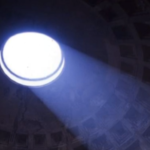
Patheon
- By using the daylight to highlight the space

Tate Britain
- Sunlight in an exhibition space
- Light, human and exhibits
The reason why we use daylight and sunlight in our design:
- Exhilarating and vivid
- “positively modify (sic) the experience of the inhabitant”
- It is necessary for our health and well-being
Case study: Carlo Volf
- He took the same space and recorded it a series of times using time-lapse photography.
- The natural light in one space can change quite a lot throughout the day
What do we know about light?
- The electromagnetic spectrum is made up of different wavelengths of radiation which has different properties.
- 400nm-700nm visible to the eyes
The quality of the light-
- g. The hospital (Geographical orientation of the building, Sunlight received by patients and health care workers in hospital)
- the daylight does change depending on the time of the day, but it also changes depending on the orientation
Light and human circadian rhythms
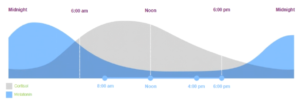
We can help our body’s circadian rhythms through the interior layout of our living spaces, combining the functions of the different spaces and human activities, so that light can help our body’s circadian rhythms.
Sustainability of the light
- Daylight is free and sustainable
- Energy saving
- Increase inefficacy of lamps
The amount of light
- Lighting metrics: Illuminance is measured in Lux(E)
- Temperature metrics: 21℃ translated into 69.8℉- slightly warm
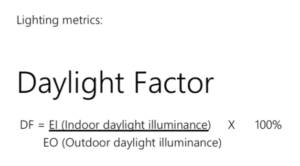


sDA
Daylight – the overcast sky condition
A skylight will bring in much better natural light than a vertical window
Light transmittance through glazing
Different window materials have different effects on the intensity of light entering the room.
Practice
After I understood this formula, I tried to calculate the daylight factor in my room. This is the first time I have put theory into practice.

EI(indoor daylight illuminance)=183 Lux
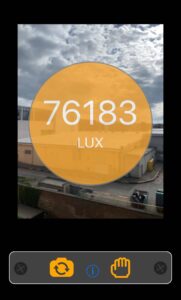
EO(Outdoor daylight illuminance)=76183Lux
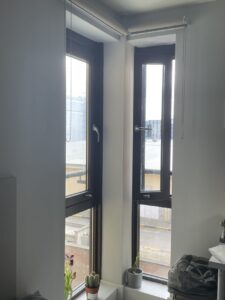
The windows in my bedroom

Plan of my bedroom
DF(my bedroom)=183 Lux/76183 Lux*100=0.24%
I am quite confused about the result of my room’s daylight factor. There might be something wrong with my data, but it is clear that this data is flawed. A subsequent review of the information revealed that there are many other factors that need to be taken into account if the calculations are to be carried out in a scientifically rigorous manner. Here’s more information that i found:
The sum of the three components gives the illuminance level (typically measured in lux) at the point considered: Illuminance = SC + ERC + IRC. The daylight factor can be improved by increasing SC (for example placing a window so it “sees” more of the sky rather than adjacent buildings), increasing ERC (for example by painting surrounding buildings white), increasing IRC (for example by using light colours for room surfaces).
The problems I encountered in the calculation of my room, which took me further afield, allowed me to gain new knowledge in curiosity and doubt.I really enjoy this combination of theory and practice.
An inspiring case
Den indre himmel, 2018
Fjordenhus, Vejle, Denmark
Photo: Anders Sune Berg
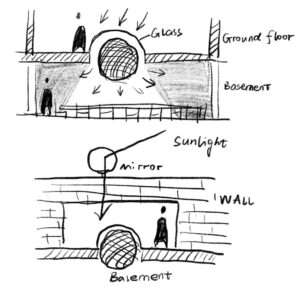
Sketch of my understanding about the case It shows how to lead the sunlight into a basement by mirror and glass.
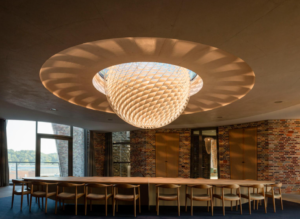
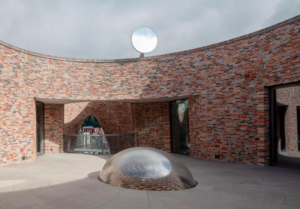
Conclusion
I’ve learned a lot of terms to describe the sun and natural light through this week’s study. . After understanding the daylight factor and nature, I can look at design cases with more professional knowledge. There are many interesting cases in the professor’s courseware. It turns out that designers and architects can play with sunshine so much!
Want to continue my journey in week 2?
For more posts on this week, please click here.
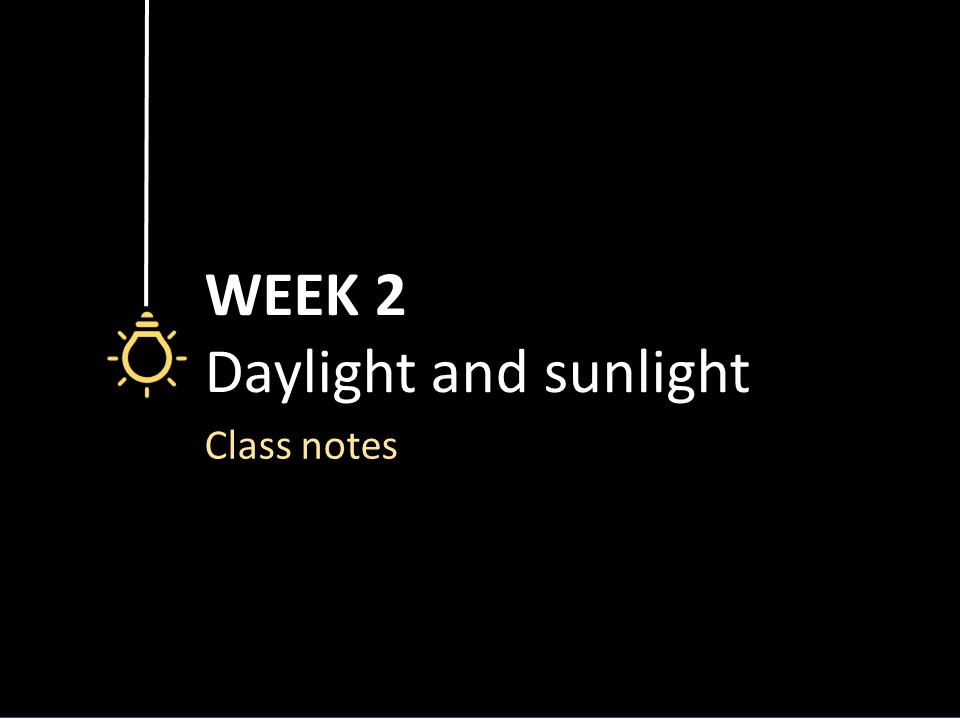


Leave a Reply